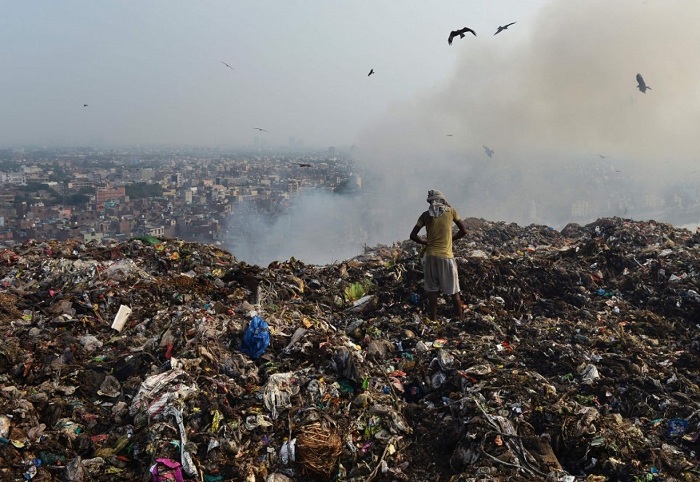A World Health Organization (WHO) report last week said that 92 percent of people worldwide breathe unhealthy air, and that about 3 million deaths a year — mostly from cardiovascular, pulmonary and other noncommunicable diseases — stemmed from high levels of air pollution. The number of people at risk rises to 98 percent in urban areas of low- and middle-income countries.
Nearly 2 million of the deaths brought on early by pollution are in Southeast Asia and the Western Pacific region, according to the report, compared with 333,000 in Europe and the Americas.
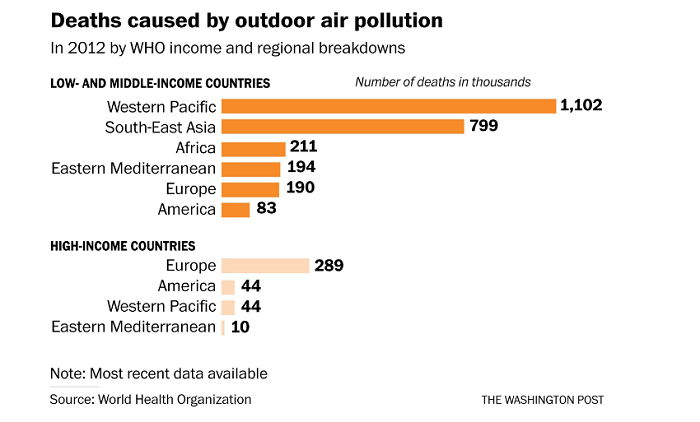
High-income countries went through a phase of industrialization that heavily polluted their cities, too. A century ago, the major manufacturing centers of the United States and Europe were plagued by smog, belched out by the largely unregulated factories and industries on which nations built their economic power.
In the "developing world," countries such as China and India are now industrializing in similar ways. On their way to lifting millions, if not billions, out of poverty, and in their quest to provide jobs, electricity and infrastructure for booming populations, regulations on industry are lax, and the mining of coal, for instance, remains a main source of power -- and pollution.
In the following maps, concentrations of particulate matter in the air -- tiny bits of chemical and dust and smoke that are microscopic -- are shown across different regions of the world, using WHO data.

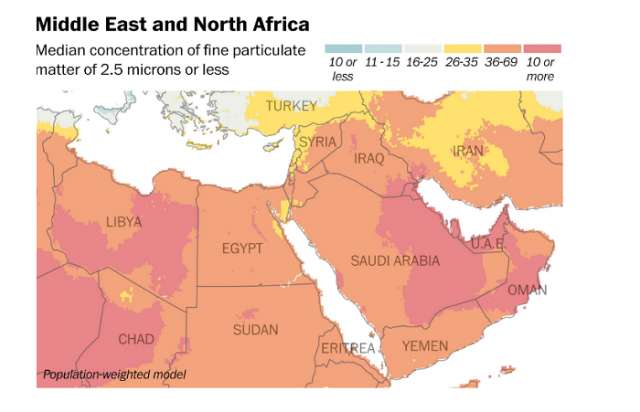
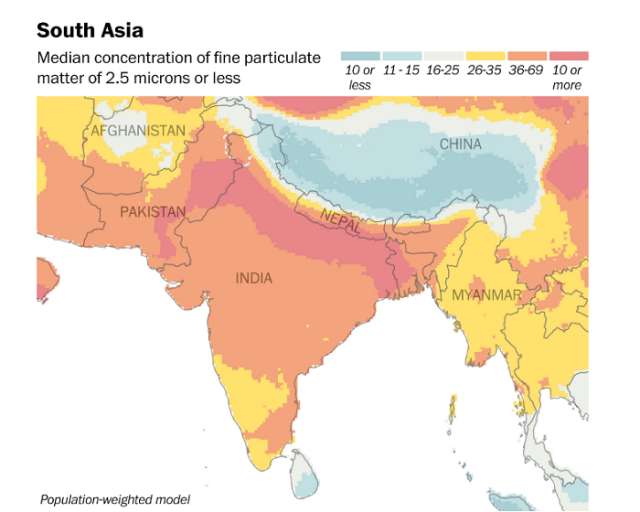
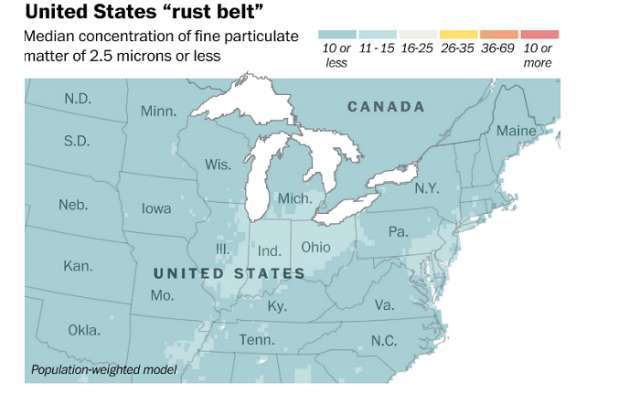
Dozens of scientists contributed to the WHO study, which took place over 18 months and used data from satellites, air-transport models, and ground monitors in more than 3,000 urban and rural locations. The study focused on particulate matter of 2.5 microns or less in size, which in high concentrations can be very unhealthy, but it did not measure other potentially harmful elements in the air such as ozone and nitrous oxide.
“Air pollution is a major cause of disease and death. It is good news that more cities are stepping up to monitor air quality, so when they take actions to improve it they have a benchmark,” said Flavia Bustreo, WHO assistant director general for family, women and children`s health. “When dirty air blankets our cities, the most vulnerable urban populations — the youngest, oldest and poorest — are the most impacted.”
The pollution concentrations shown in the maps above are caused by a variety of factors, some human-made and others not. For instance, in the map of the Middle East and North Africa, much of that pollution is caused by dust storms that are common in the deserts than make up much of that region. In the map of the eastern United States, it is clear that urban centers as well as regions with large manufacturing and mining industries suffer from the worst concentrations of bad air.
There are some positive trends, but they are mostly from high income countries. According to the WHO, "more than half of the monitored cities in high-income countries and more than one-third in low- and middle-income countries reduced their air pollution levels by more than 5% in five years."
The air-pollution crisis is most dire, however, in China`s industrial heartland, and in South Asia`s Indo-Gangetic plain. The populations of China, India, Pakistan and Bangladesh make up nearly 40 percent of the world`s entire population.
India has pledged to majorly expand its use of renewable energy sources, but also plans to more than double its investment in coal production. India`s coal is mostly of a low quality with high ash content that results in it being twice as polluting as coal mined in the United States, for instance. Most of India`s coal is extracted from strip mines, too, as opposed to China, where almost all of it comes from underground mines. Some estimates put India`s greenhouse gas emissions increasing threefold by 2030, as the country strives toward getting the 300 million citizens without electricity onto the grid.
With India`s ratification of the Paris agreement, we have moved one large step closer to passing the threshold of countries representing 55 percent of global emissions needed to put the agreement into effect. The question of whether countries such as India and China can continue along their development trajectories while limiting or reversing air-pollution trends, however, is much larger than the Paris agreement. It rests on their governments, and governments around the world, coming together to promote alternative energy sources so that "developing" countries don`t pollute the world as much as "developed" countries did on their way to where they are now.
Max Bearak writes about foreign affairs for the Washington Post. Previously, he reported from South Asia for the New York Times and others.








